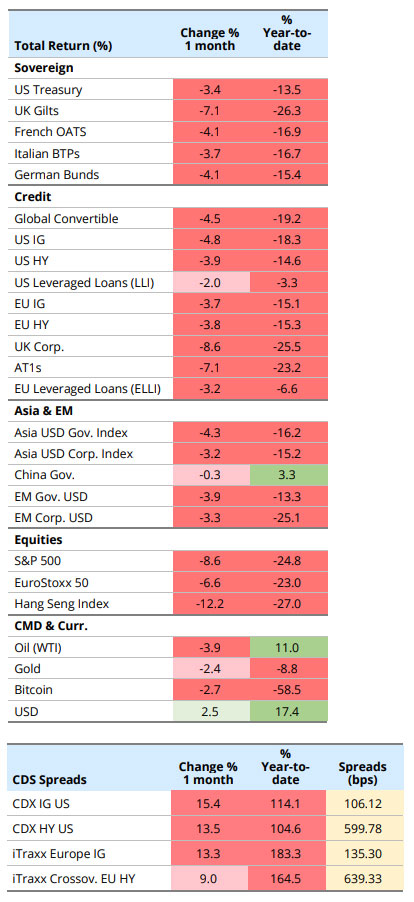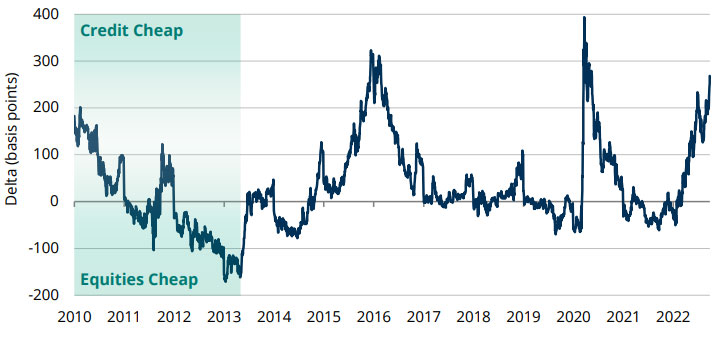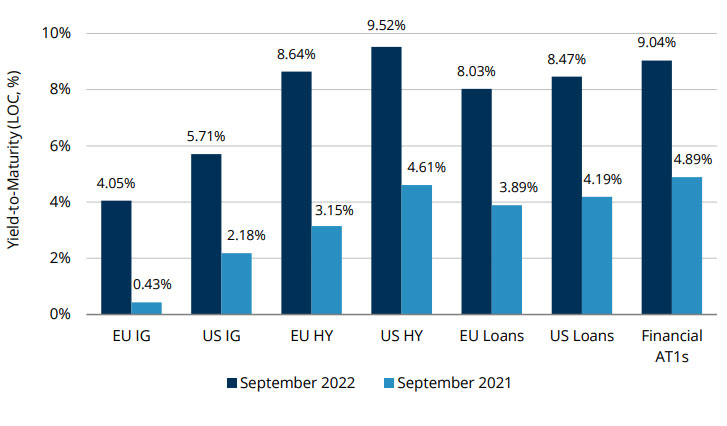
Terms of Use
Website Terms of Use
This page advises you of the terms of use of this website http://www.cqs.com (the "Website"). Please read these terms of use carefully before you start to use the Website. By using the Website, you represent that you accept and agree to abide with these terms of use. If you do not agree to these terms of use, please refrain from using the Website.
1. Recipients of Communication
The information in the Website is issued by CQS (UK) LLP or certain of its affiliated entities (together "CQS", "we" or "us") for and on behalf of, or in respect of, various investment entities managed or advised by CQS (the "Funds") and is not directed to any person in any jurisdiction where the publication or availability of the Website is prohibited or by reason of that person's nationality, residence, domicile or otherwise, or if CQS would become subject to licence or registration regulations of that jurisdiction. Persons in respect of whom such prohibitions apply must not access this Website.
2. Accessing the Website
Access to certain areas of the Website may require possession of a password provided by us. A user who is provided a password should not disclose that password to any other person or allow any other person to gain access to restricted areas of the Website using that password. Users are accountable for the storage and use of their passwords. If a password becomes lost or stolen users must contact us to cancel the password and be issued a replacement. No unauthorised person should attempt to gain access to any restricted area of the Website. We disclaim all liability for any loss a user may suffer from access to the Website by an unauthorised person.
3. Risk Considerations
Past performance of the Funds and investments described herein cannot be relied upon as a guide to future performance. No representation or warranty, express or implied, is made regarding future performance. Opinions and/or estimates reflect a judgement at the original date of publication and are subject to change without notice. The price, value, and income from any of the investments mentioned in this Website may fall as well as rise and we cannot guarantee that any capital invested will maintain or increase in value.
An investment in a Fund will involve a number of material risks which include, without limitation, risks associated with adverse market developments, volatility of markets invested in, currency and exchange rate risks, risk of counterparty or issuer default, political risks, pandemics, geopolitical instability, and risk of illiquidity. Any assumptions, assessments, intended targets, statements or other such views expressed herein (collectively “Statements”) regarding future events and circumstances or that are forward looking in nature constitute only subjective views, outlooks or estimates and are based on CQS’s expectations, intentions, or beliefs. The Statements should not in any way be relied upon, and involve inherent risk and uncertainties beyond CQS’s control. The Statements should not be assumed to be accurate or complete, now or in the future (including with respect to the composition and investment characteristics of any Fund), and may be subject to change. CQS undertakes no responsibility or obligation to revise or update such Statements.
Users of this Website should seek independent financial, legal, or tax advice prior to making any investment decision and no information herein shall constitute general or specific investment, legal, tax or accounting advice of any kind. Any investment decision should be based on the terms described in the relevant offering document, subscription documents, constitutional document and/or any other relevant document as appropriate (each an “Offering Document”). Any investment in a Fund will be subject to the terms set out in its Offering Document and all applicable laws and regulations. There is always a risk that any capital invested could incur a substantial or complete loss.
4. Calculation of Performance Information
Unless otherwise indicated, Fund performance figures included in this Website are net of fees and operating expenses and are unaudited.
5. Target Returns and Indices
Target returns and volatility targets referred to on this Website are high-level, may change with market conditions, and are generally used only as guidelines. Target returns reflect subjective determinations by CQS. Performance may fluctuate, particularly over short periods of time. Target returns should be evaluated over the time periods indicated and not over shorter periods. Target returns are not intended to be actual performance and should not be relied upon as any indication of actual or future performance. Some of the information contained in this Website may be aggregated data of transactions executed by CQS that has been compiled so as not to identify the underlying transactions of any particular Fund.
Any indices included on this Website are included to simply show the general market trends relative to the types of investments CQS tends to select for certain Funds for the periods indicated on this Website. The indices are not representative of the Funds in terms of either composition or risk (including volatility and other risk related factors). Unless expressly stated to the contrary, the Funds are not managed to a specific index.
6. Accuracy of Information
No representation, warranty or undertaking is given by us that the information contained in this Website is accurate, complete, comprehensive, or up to date, and no liability is accepted by us for such information. In particular, we shall not be obliged to remove any outdated information from this Website or to expressly mark it as outdated. In no event will we be liable to any person for any direct, indirect, special, or consequential damages arising out of any use of the information contained on this Website, or on any other hyper-linked website, including, without limitation, any lost profits, business interruption, loss of programs or data on your equipment, or otherwise, even if we are expressly advised of the possibility or likelihood of such damages. This does not exclude or restrict any duty or liability that we have under any regulatory system where to do so would breach law or regulation.
7. Stock exchange prices and exchange rates
The prices/values shown on this Website in relation to different underlying securities for a listed Fund (if any) are based on the prices notified to the Fund as the last sale price of the relevant securities on the stock exchange on which they are traded (delayed up to 20 minutes) as at the time and date shown. Neither the Funds nor CQS have verified any of the stock exchange or other information contained on this Website and it should be verified separately before relying on it. Prices and values shown on the Website may vary throughout the course of, and between, stock exchange trading days, market trading times and business days in general.
8. No Offer or Advice
Neither the information posted on, nor any opinions contained within pages of, this Website constitutes a public offer under any applicable legislation or an offer or solicitation or recommendation to buy or sell any securities or financial instruments, to effect any transactions, or to conclude any legal act of any kind whatsoever. If the information and opinions contained in this Website would be categorised as constituting a public offer under the legislation of the jurisdiction from which you wish to access the Website, you must not access the Website.
The information included in this Website has been prepared for information purposes and does not constitute any financial, investment, legal, tax or other advice or recommendation with respect to any securities or other financial instruments referred to herein, it is not tailored for any particular investor, and does not otherwise constitute, and may not be construed as, individual investment advice. You should obtain relevant and specific professional advice before making any investment decision.
9. General Selling Restrictions
Unless otherwise expressly stated herein, the Funds’ shares or interests (“Interests”) have not been and will not be registered under the US Securities Act of 1933, as amended (the "US Securities Act") or any other applicable law of the United States. The Funds, unless expressly stated otherwise, have not been registered under the US Investment Company Act of 1940, as amended. Unless expressly stated otherwise, interests in the Funds may not be offered, sold, transferred, distributed or otherwise delivered directly or indirectly in the United States or to or for the account of any US Person (as defined in Regulation S under the US Securities Act). Subject to certain exceptions, the securities referred to herein and on the pages that follow may not be offered, sold, resold, taken up, exercised, renounced, transferred, delivered, or distributed, directly or indirectly, in Australia, Canada, or Japan or to any resident or citizen of Australia, Canada, or Japan. The offer and sale of the securities referred to herein and on the pages that follow have not been and will not be registered under the applicable securities laws of Australia, Canada, or Japan.
10. Important Information for Investors in Switzerland
This Website contains information on foreign collective investment schemes which have not been approved by the Swiss Financial Market Supervisory Authority (FINMA) for distribution in or from Switzerland to non-qualified investors in accordance with Article 119 et seq of the Federal Act on Collective Investment Schemes of 23 June 2006 ("CISA"). The information contained in the following pages is only directed to "qualified investors" within the meaning of Article 10 CISA with domicile/registered seat in Switzerland.
If you are accessing this Website from Switzerland, by clicking on the relevant button to access this website you certify that you are a qualified investor with domicile/registered seat in Switzerland and that you have read, understood and accepted the legal terms and conditions following below.
Qualified investors pursuant to Article 10 para 3,3 bis and 3 ter CISA are in particular:
1. regulated financial intermediaries, such as banks, securities dealers, fund management companies and asset managers of collective investment schemes and central banks;
2. regulated insurance companies;
3. public entities and retirement benefits institutions with professional treasury facilities;
4. companies with professional treasury facilities; and
5. high-net worth individuals which fulfil the requirements of Article 6 of the Ordinance on Collective Investment Schemes of 22 November 2006.
In the event that you are an "independent asset manager" and fulfil the requirements of Article 3 para 2 lit. c CISA, you certify that you will use the information on this website exclusively for those of your clients that are considered as qualified investors within the meaning of Article 10 CISA.
11. Important Information for Investors in the UK
In the UK, this Website is directed only at persons who (i) have professional experience in matters relating to investments who fall within Article 19(1) of the Financial Services and Markets Act 2000 (Financial Promotion) Order 2005 ("FPO"), (ii) are high net worth companies, unincorporated associations, etc. within Article 49 FPO or (iii) are persons to whom it otherwise lawfully may be communicated (including, for the avoidance of doubt, such persons that fall within a specified exemption under the Financial Services and Markets Act 2000 (Promotion of Collective Investment Schemes) (Exemptions) Order 2001 or COBS 4.12 of the Financial Conduct Authority Conduct of Business Sourcebook).
All persons who fall within the above categories are deemed "Relevant Persons". Any investment or investment activity to which this Website relates is available only to, and will be engaged in only with, Relevant Persons. Any person in the UK who is not a Relevant Person should not act or rely on this Website or any of its content.
12. Important Information for Investors in the European Economic Area
In relation to each member state (each a “Member State”) of the European Economic Area (the “EEA”) which has implemented the Alternative Investment Fund Managers Directive (the “AIFMD”) (and for which transitional arrangements are not/no longer available), the contents of this Website may only be accessed and Interests in a Fund may only be offered or placed in a Member State to the extent that: (1) the relevant Funds are permitted to be marketed to professional investors in the relevant Member State in accordance with AIFMD (as implemented into the local law/regulation of the relevant Member State); or (2) this Website may otherwise be lawfully accessed and the Interests may otherwise be lawfully offered or placed in that Member State (including at the initiative of the investor).
In relation to each Member State of the EEA which, at the date of access to this Website, has not implemented the AIFMD, this Website may only be accessed and Interests may only be offered or placed to the extent that this Website may be lawfully accessed and the Interests may lawfully be offered or placed in that Member State (including at the initiative of the investor).
13. Important Information for Investors in Hong Kong
In Hong Kong, this Website is directed only at persons who qualify as "professional investors" as defined in the Securities and Futures Ordinance (the "SFO") and the Securities and Futures (Professional Investor) Rules made under the SFO. The information contained in this Website does not constitute an "offer to the public" within the meaning of the Hong Kong Companies Ordinance, and is not an advertisement, invitation or document relating to any securities or collective investment schemes or any other investment under the SFO.
None of the Funds and/or products described in this Website have been authorised by any regulatory authority in Hong Kong. Any investment or investment activity to which this Website relates is available only to, and will be engaged in only with, professional investors. Any person who is not a professional investor should not act or rely on this Website or any of its content.
14. Copyright, Trademarks and Other Rights
We and/or our associates own the copyright in the content of this Website, unless otherwise stated. You may use the information on this Website and reproduce it in hard copy for your personal reference only. Such information may not otherwise be reproduced, distributed, or transmitted to any other person or incorporated in any way into another database, document, or other materials without our permission. Nothing on this Website should be considered as granting any licence or right under any trademark of us, our associates, or any third party.
15. Hyperlinks
This Website may provide addresses or hyperlinks which lead you out of the Website. Except to the extent to which the Website refers to our own website material, we have not reviewed any such websites which link to this Website or to which this Website links, and are not responsible for the content of any other websites or pages linked to or linking from this Website. Such addresses or hyperlinks are provided solely for your convenience and information and are completely beyond our control. Accessing such websites or following such links to any other websites or pages shall be at your own risk. We do not assume any responsibility for the accuracy, completeness, or legality of the contents of such websites, or for any offers or services contained therein.
16. Privacy and Cookies
We are concerned about the privacy of any personal information you may provide to us through this Website. A "cookie" is a piece of information that is saved to your computer's hard disk by the web server. Confirmation of your reading and accepting these terms and conditions will place a cookie on your computer's hard disk. This will ease your navigation around this Website by not popping up these terms and conditions again during this browser session. The cookie is temporary and will be removed when you close your browser. The cookie is not used for any other reason. You are not obliged to accept a cookie that we send you, and you can modify your browser so that it will not accept cookies.
17. Data Protection
CQS processes personal data relating to users of this Website and others. Details of such processing are as described in the following Privacy Notice: CQS (UK) LLP Privacy Notice – Business Contacts and website users.
18. Jurisdiction
Use of this Website shall be governed in accordance with the laws of England and Wales and the courts of England and Wales shall have exclusive jurisdiction over any dispute (including any dispute relating to non-contractual obligations) arising out of your use of this Website.
19. Changes to the Website
The information on this Website, including these terms and conditions, are subject to change without notice. We have the right to suspend or withdraw the provision of all or any of the information on the Website without prior notice at any time. You agree to review these terms of use regularly and your continued use of the Website will mean you agree to any changes.
20. Severability of Provisions
Any provision of these terms of use that is prohibited or unenforceable in any jurisdiction is ineffective as to that jurisdiction to the extent of the prohibition or unenforceability. That does not invalidate the remaining provisions of these terms of use nor affect the validity or enforceability of that provision in another jurisdiction.
21. Indemnity
You shall be liable to us for any loss, liability or cost we suffer as a result of your use of the Website or any breach of these terms. You agree to indemnify, defend and hold harmless us and our agents, employees and third party sources from and against any and all suits, losses, claims, demands, liabilities, damages, costs and expenses (including properly incurred attorneys' fees) that arise from or relate to: (a) your use of the Website; (b) your breach of these terms; or (c) your violation of any applicable law, statute, ordinance, regulation or of any third party's rights.



